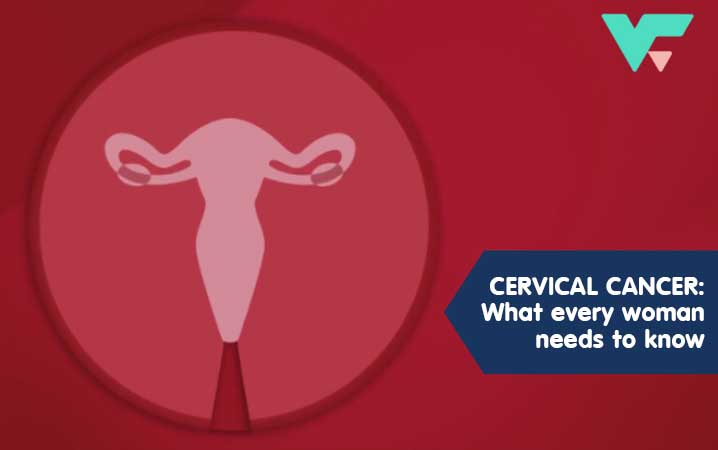- No Comments
Cervical Cancer: Everything You Need to Know About This Silent Killer
January is cervical cancer awareness month and all over the world, campaigns are held to spread the word about this silent killer. Let’s talk a little more about this.
What is Cervical Cancer?
Cervical cancer is a cancer that occurs in the cells of the cervix or the neck of the womb. The cervix is located in the lower part of the uterus, connecting the vagina to the womb.
The cancer begins when healthy cells in the cervix develop changes (mutations) in their DNA. Ideally, healthy cells grow and multiply at a set rate, eventually dying at a set time. The mutations tell the cells to grow and multiply out of control, and they don’t die. The accumulating abnormal cells form a mass (tumor). Cancer cells invade nearby tissues and can break off from a tumor to spread (metastasize) elsewhere in the body.
It isn’t clear what causes cervical cancer, but it’s certain that it does not just come about on its own. Certain strains of a virus called HPV (Human papillomavirus) play a huge role in causing cervical cancer. HPV is very common, however, most people with the virus never develop cancer. This means there are other factors — such as your environment or your lifestyle choices — also determine whether you’ll develop cervical cancer.
Medical fact: HPV is sexually transmitted.
Our body’s natural response to any pathogen (disease-causing organism) is to prevent it from doing us harm. In a small percentage of people, the virus survives and can stay low-key for many years, contributing to the process that leads to some of the cervical cells becoming cancer cells.
Many cancers cannot be prevented, but cervical cancer can – by having regular screening tests and taking the HPV vaccine which can protect you from having an HPV infection.
What are the signs and symptoms?
Cervical cancer is very stealthy in its early stages, showing no symptoms or signs. However, as the cancer advances, symptoms that begin to present include:
- Pelvic pain
- Pain during intercourse
- Vaginal bleeding after intercourse
- Bleeding between periods
- Bloody/watery discharge with a foul odour
What are the types of cervical cancer?
These are the two main types of cervical cancer. Knowing which one is which, is key to determining prognosis and treatment:
- Squamous cell carcinoma. This type of cervical cancer begins in the thin, flat cells (squamous cells) lining the outer part of the cervix, which projects into the vagina. Most cervical cancers are squamous cell carcinomas.
- Adenocarcinoma. This type of cervical cancer begins in the column-shaped glandular cells that line the cervical canal.
Very rarely, cancer occurs in other cells in the cervix.
What puts a woman at risk of having cervical cancer?
Apart from the fact that HPV is sexually transmitted, there are several other risk factors involved in cervical cancer:
- Having several sexual partners. The greater your number of sexual partners — and the greater your partner’s number of sexual partners — the greater your chance of acquiring HPV.
- Having sex too early. Having sex at an early age increases your risk of HPV.
- Having sexually transmitted infections (STIs). Having STIs — such as chlamydia, gonorrhea, syphilis and HIV/AIDS — increases your risk of HPV.
- A compromised immune system. You may be more likely to develop cervical cancer if your immune system is weakened by another health condition and you have HPV.
- Smoking. Smoking is associated with squamous cell cervical cancer.
How do you reduce your risk of cervical cancer?
- First thing’s first! Ask your doctor about having pap smear tests if you have not already had a pap smear. These tests help detect precancerous conditions in the cervix and your doctor can monitor you over a period of time. Usually, it is advised to have routine pap smears at the age of 21.
- The HPV vaccine is a life-saver. Imagine a vaccine that can greatly reduce or completely prevent cervical cancer. Ask your doctor about the HPV vaccine and when it is appropriate for you
- Safe sex! This song has been sung since time immemorial. Protect yourself, use protection if you must have sex with a new partner or limit the number of sexual partners you have.
If you’ve been waiting for a sign to see a specialist to talk about getting the HPV vaccine, this is it.
Please do not forget to contact us if you have any questions. Send a mail to ask@wellfert.com
You can also follow our social media pages @wellfert on Facebook, Instagram and LinkedIn
Source: Mayo Clinic




Leave A Comment